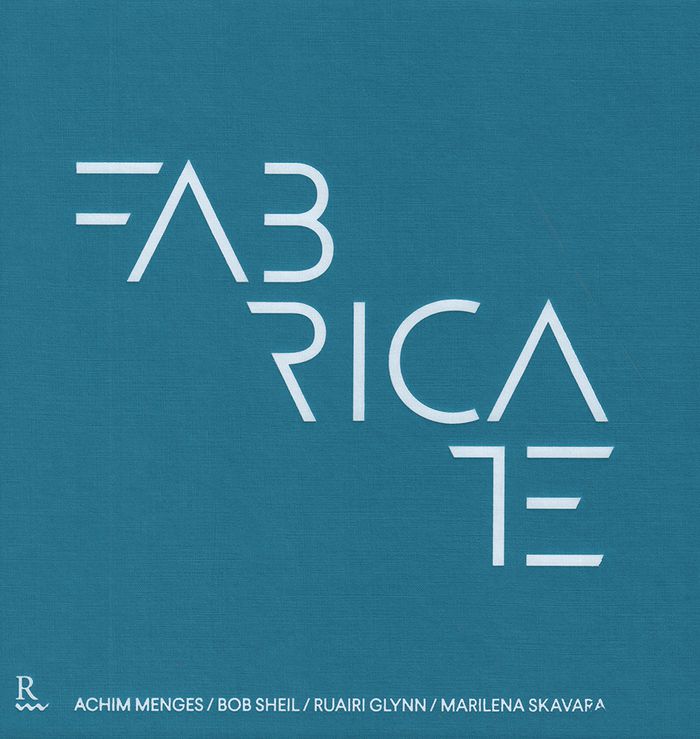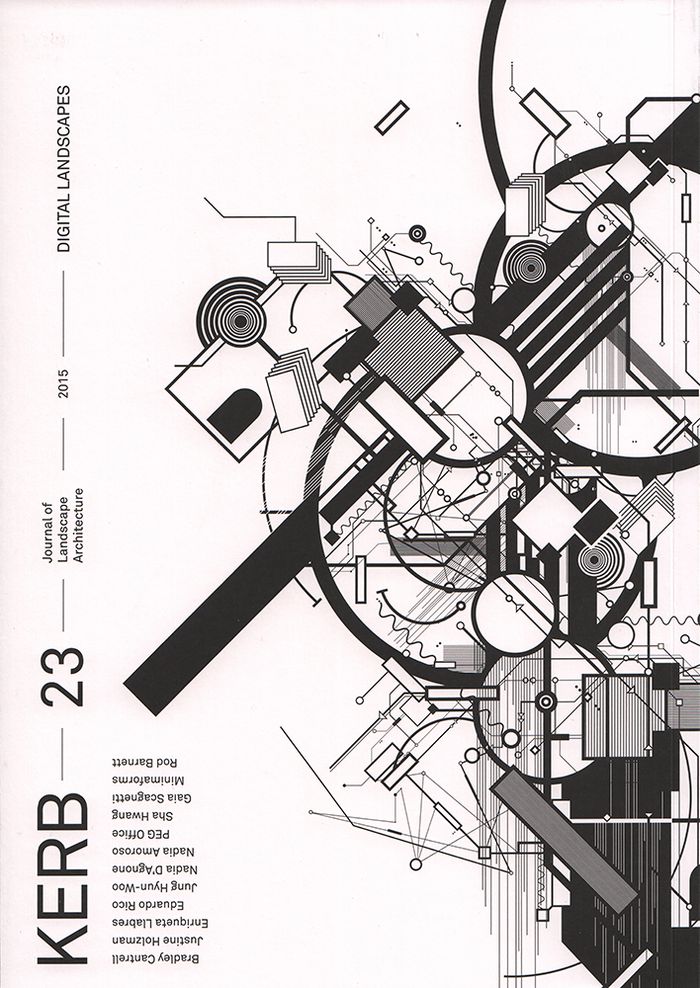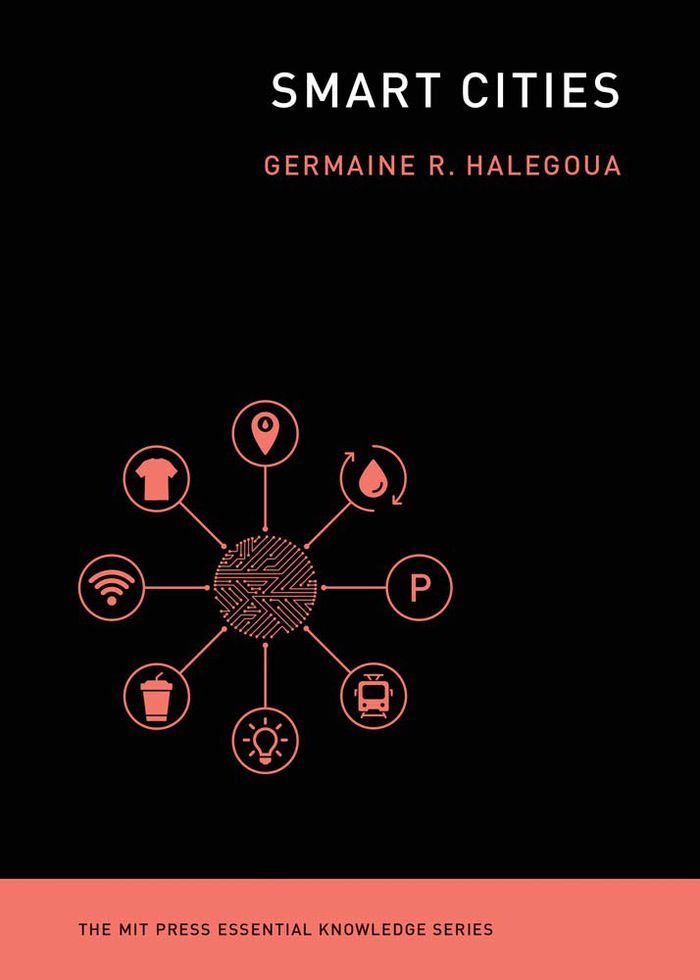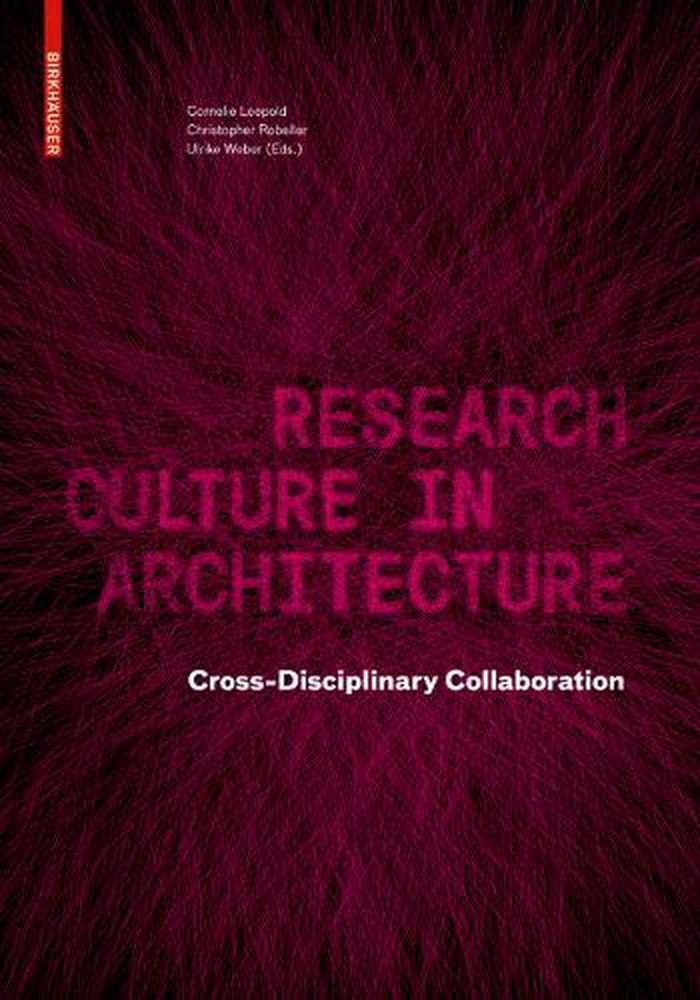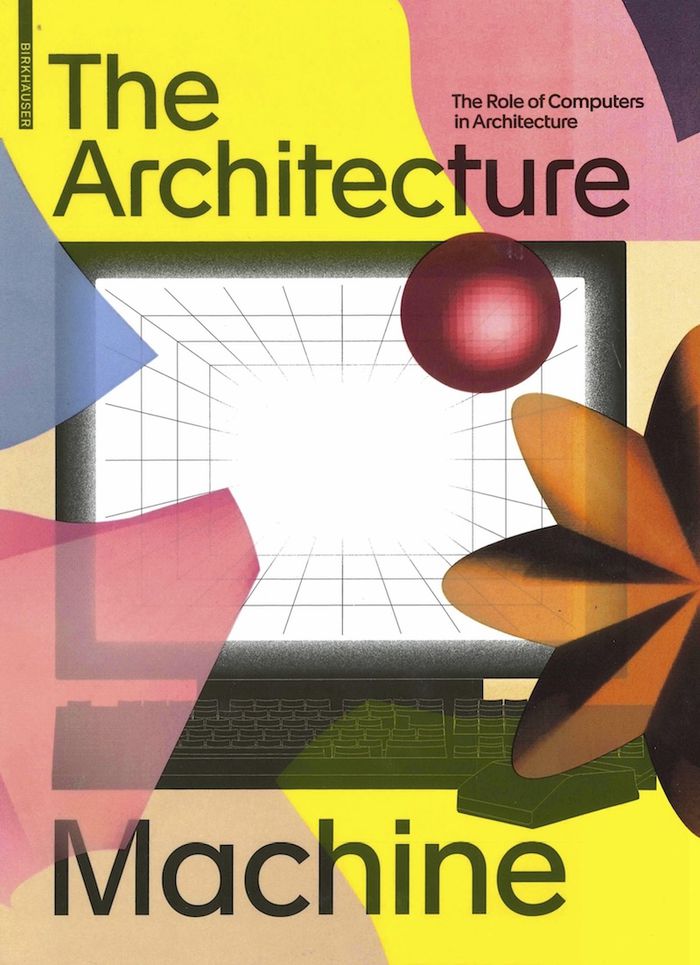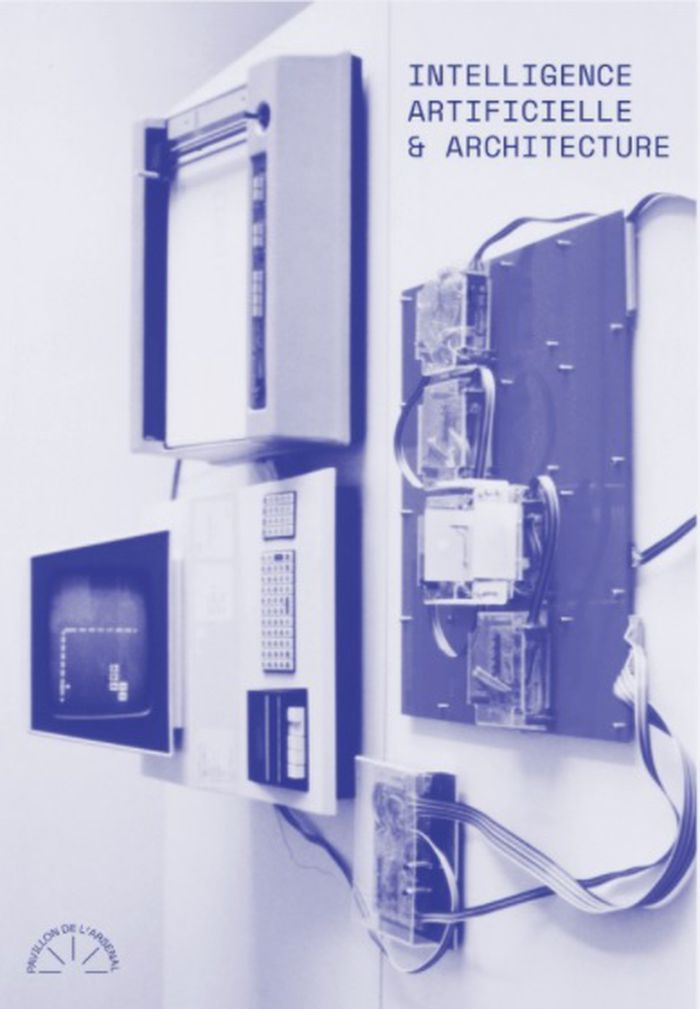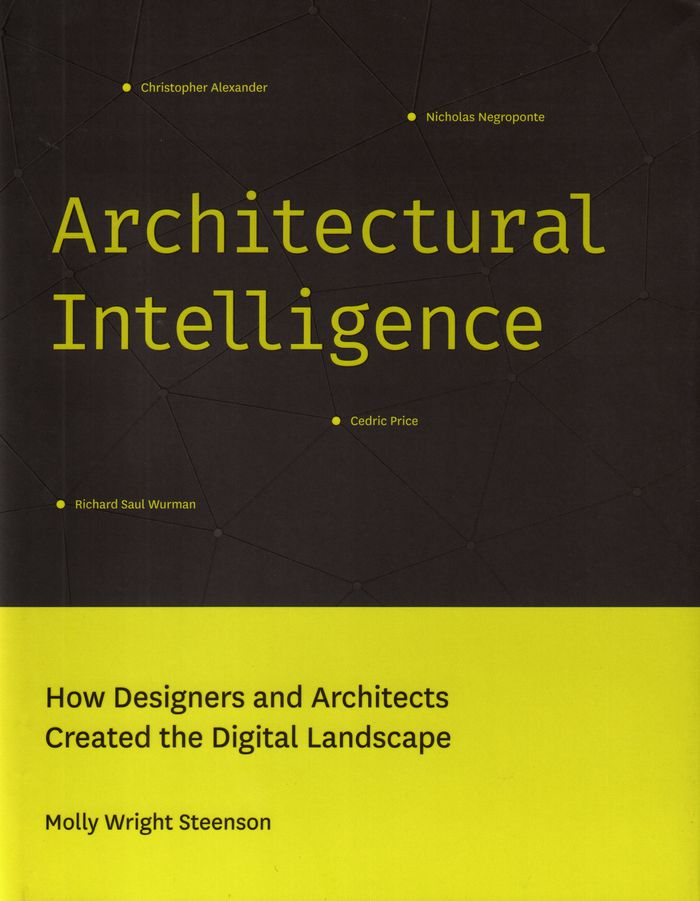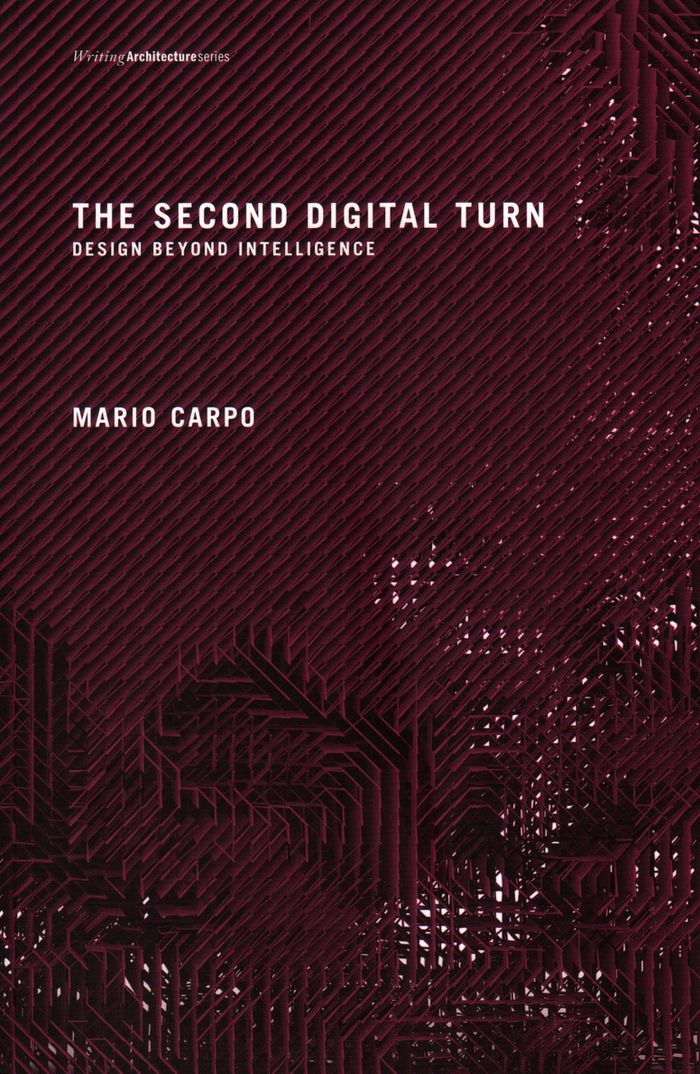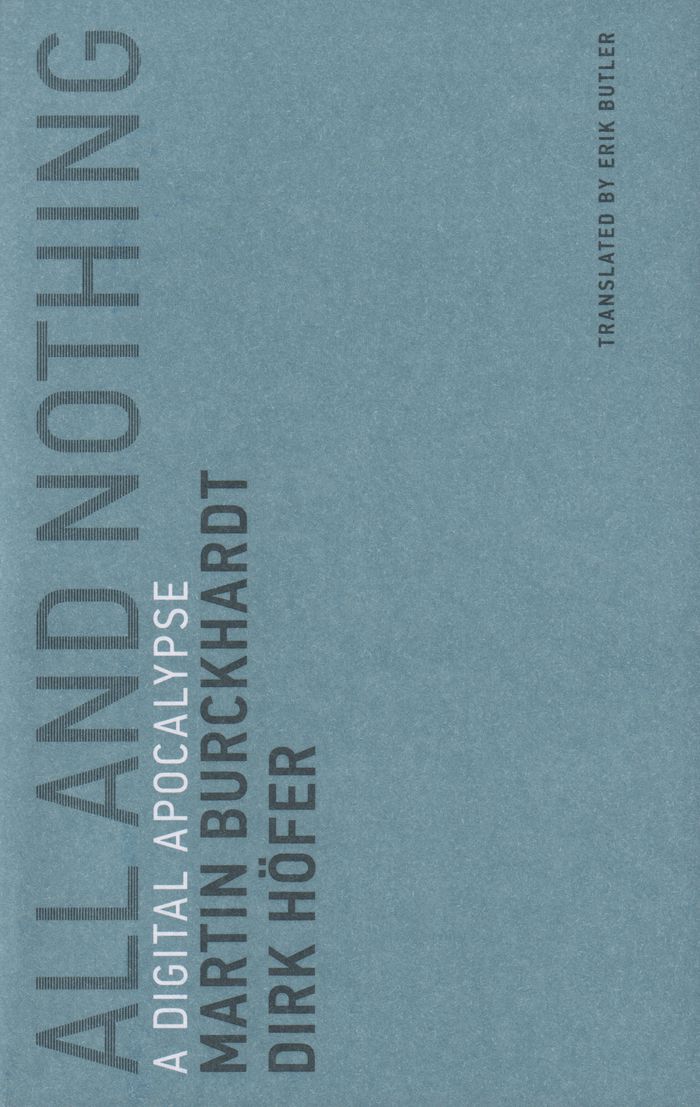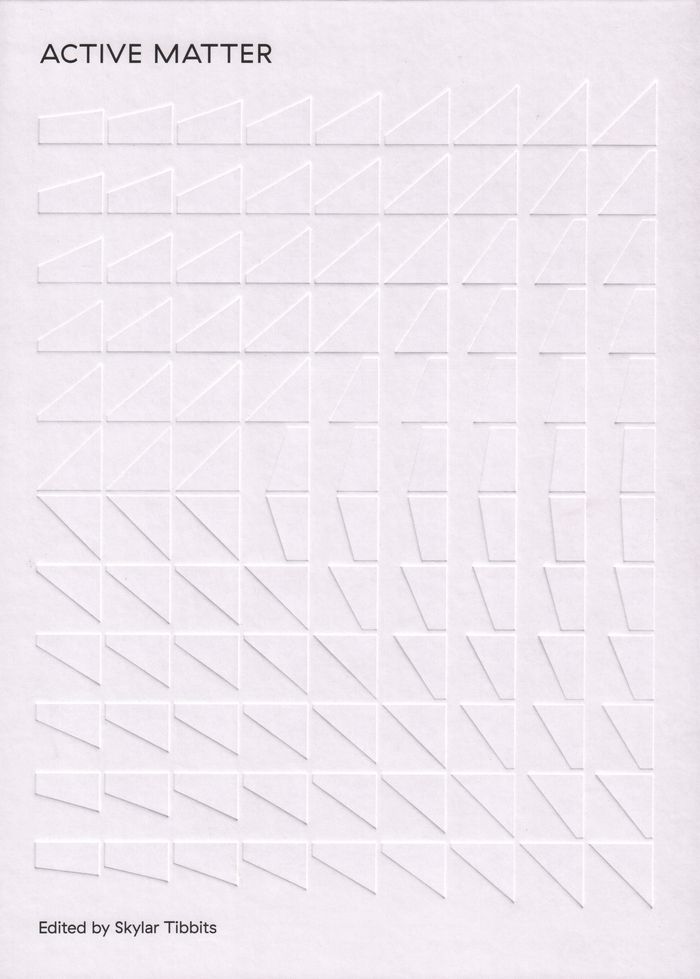$49.95
(disponible sur commande)
Résumé:
Bringing together pioneers in design and making within architecture, construction, engineering, manufacturing, materials technology and computation, 'Fabricate' is a triennial international conference, now in its third year (ICD, University of Stuttgart, April 2017). Each year it produces a supporting publication, to date the only one of its kind specialising in Digital(...)
Fabricate: rethinking design and construction
Actions:
Prix:
$49.95
(disponible sur commande)
Résumé:
Bringing together pioneers in design and making within architecture, construction, engineering, manufacturing, materials technology and computation, 'Fabricate' is a triennial international conference, now in its third year (ICD, University of Stuttgart, April 2017). Each year it produces a supporting publication, to date the only one of its kind specialising in Digital Fabrication. The 2017 edition features 32 illustrated articles on built projects and works in progress from academia and practice, including contributions from leading practices such as Foster + Partners, Zaha Hadid Architects, Arup, and Ron Arad, and from world-renowned institutions including ICD Stuttgart, Harvard, Yale, MIT, Princeton University, The Bartlett School of Architecture (UCL) and the Architectural Association.
Architecture numérique
Kerb 23: digital landscapes
$38.95
(disponible sur commande)
Résumé:
'Kerb' issue 23 examines ways in which ‘Digital Landscape’ discourse can be applied to landscape architecture. Through exploring Simulation, Fabrication, Augmentation and emerging theories of ‘Digital Ecologies’ we can navigate new horizons of what is made ‘possible’ within and through the realm of digital landscapes in regards to unlocking, transforming, storing and(...)
Architecture numérique
septembre 2016
Kerb 23: digital landscapes
Actions:
Prix:
$38.95
(disponible sur commande)
Résumé:
'Kerb' issue 23 examines ways in which ‘Digital Landscape’ discourse can be applied to landscape architecture. Through exploring Simulation, Fabrication, Augmentation and emerging theories of ‘Digital Ecologies’ we can navigate new horizons of what is made ‘possible’ within and through the realm of digital landscapes in regards to unlocking, transforming, storing and distributing the way we might reveal, uncover, and generate alternative modes of translation and interaction.
Architecture numérique
Smart cities
$19.95
(disponible sur commande)
Résumé:
Over the past ten years, urban planners, technology companies, and governments have promoted smart cities with a somewhat utopian vision of urban life made knowable and manageable through data collection and analysis. Emerging smart cities have become both crucibles and showrooms for the practical application of the Internet of Things, cloud computing, and the integration(...)
Smart cities
Actions:
Prix:
$19.95
(disponible sur commande)
Résumé:
Over the past ten years, urban planners, technology companies, and governments have promoted smart cities with a somewhat utopian vision of urban life made knowable and manageable through data collection and analysis. Emerging smart cities have become both crucibles and showrooms for the practical application of the Internet of Things, cloud computing, and the integration of big data into everyday life. Are smart cities optimized, sustainable, digitally networked solutions to urban problems? Or are they neoliberal, corporate-controlled, undemocratic non-places? This volume in the MIT Press Essential Knowledge series offers a concise introduction to smart cities, presenting key concepts, definitions, examples, and historical contexts, along with discussions of both the drawbacks and the benefits of this approach to urban life. After reviewing current terminology and justifications employed by technology designers, journalists, and researchers, the book describes three models for smart city development?smart-from-the-start cities, retrofitted cities, and social cities?and offers examples of each. It covers technologies and methods, including sensors, public wi-fi, big data, and smartphone apps, and discusses how developers conceive of interactions among the built environment, technological and urban infrastructures, citizens, and citizen engagement. Throughout, the author?who has studied smart cities around the world?argues that smart city developers should work more closely with local communities, recognizing their preexisting relationship to urban place and realizing the limits of technological fixes. Smartness is a means to an end: improving the quality of urban life.
Architecture numérique
$84.95
(disponible sur commande)
Résumé:
Research in and on architecture is as complex as the discipline itself with its different specialist fields, and therefore the results often remain unconnected. This publication combines digital and analog research issues and demonstrates how important cross-disciplinary cooperation in architecture is today. The complexity and increasing specialization are elaborated(...)
Architecture numérique
décembre 2019
Research culture in architecture : cross-disciplinary collaboration
Actions:
Prix:
$84.95
(disponible sur commande)
Résumé:
Research in and on architecture is as complex as the discipline itself with its different specialist fields, and therefore the results often remain unconnected. This publication combines digital and analog research issues and demonstrates how important cross-disciplinary cooperation in architecture is today. The complexity and increasing specialization are elaborated on in the various chapters and then linked to the core of architecture, i.e. design. Scientists from the theoretical and practical fields present research results in the following subjects: "design methodology", "architectural space, perception, and the human body", "analog and digital timber construction", "visualization", "robotics", "architectural practice and research", and "sustainability".
Architecture numérique
$65.00
(disponible sur commande)
Résumé:
Today, it is hard to imagine the everyday work in an architectural practice without computers. Bits and bytes play an important role in the design and presentation of architecture. This book, which is published in the context of an exhibition of the same name of the Architekturmuseum der TUM at the Pinakothek der Moderne in Munich (October 14, 2020 to January 10, 2021),(...)
The architecture machine: the role of computers in architecture
Actions:
Prix:
$65.00
(disponible sur commande)
Résumé:
Today, it is hard to imagine the everyday work in an architectural practice without computers. Bits and bytes play an important role in the design and presentation of architecture. This book, which is published in the context of an exhibition of the same name of the Architekturmuseum der TUM at the Pinakothek der Moderne in Munich (October 14, 2020 to January 10, 2021), considers the development of the digital in architecture. In four chapters, it recounts this intriguing history from its beginnings in the 1950s through to today and presents the computer as a drawing machine, as a design tool, as a medium for telling stories, and as an interactive communication platform. The basic underlying question is simple: Has the computer changed architecture? And if so, by how much?
Architecture numérique
$20.00
(disponible sur commande)
Résumé:
L’intelligence artificielle a déjà investi nombre d’industries et de disciplines en leur donnant les moyens de relever des défis jusque là inédits et en rendant possibles des opérations trop complexes. Cette publication permet à chacun de comprendre les grandes étapes de l'évolution entre intelligence artificielle (IA) et Architecture, de parcourir une sélection de films(...)
Intelligence artificielle & architecture
Actions:
Prix:
$20.00
(disponible sur commande)
Résumé:
L’intelligence artificielle a déjà investi nombre d’industries et de disciplines en leur donnant les moyens de relever des défis jusque là inédits et en rendant possibles des opérations trop complexes. Cette publication permet à chacun de comprendre les grandes étapes de l'évolution entre intelligence artificielle (IA) et Architecture, de parcourir une sélection de films ou découvrir les recherches et animations réalisées par les laboratoires universitaires américains.
Architecture numérique
$46.95
(disponible sur commande)
Résumé:
In Architectural Intelligence, Molly Wright Steenson explores the work of four architects in the 1960s and 1970s who incorporated elements of interactivity into their work. Christopher Alexander, Richard Saul Wurman, Cedric Price, and Nicholas Negroponte and the MIT Architecture Machine Group all incorporated technologies—including cybernetics and artificial(...)
décembre 2017
Architectural intelligence: how designers and architects created the digital landscape
Actions:
Prix:
$46.95
(disponible sur commande)
Résumé:
In Architectural Intelligence, Molly Wright Steenson explores the work of four architects in the 1960s and 1970s who incorporated elements of interactivity into their work. Christopher Alexander, Richard Saul Wurman, Cedric Price, and Nicholas Negroponte and the MIT Architecture Machine Group all incorporated technologies—including cybernetics and artificial intelligence—into their work and influenced digital design practices from the late 1980s to the present day.
The second digital turn
$33.95
(disponible sur commande)
Résumé:
Almost a generation ago, the early software for computer aided design and manufacturing (CAD/CAM) spawned a style of smooth and curving lines and surfaces that gave visible form to the first digital age, and left an indelible mark on contemporary architecture. But today's digitally intelligent architecture no longer looks that way. In The Second Digital Turn, Mario Carpo(...)
The second digital turn
Actions:
Prix:
$33.95
(disponible sur commande)
Résumé:
Almost a generation ago, the early software for computer aided design and manufacturing (CAD/CAM) spawned a style of smooth and curving lines and surfaces that gave visible form to the first digital age, and left an indelible mark on contemporary architecture. But today's digitally intelligent architecture no longer looks that way. In The Second Digital Turn, Mario Carpo explains that this is because the design professions are now coming to terms with a new kind of digital tools they have adopted—no longer tools for making but tools for thinking. In the early 1990s the design professions were the first to intuit and interpret the new technical logic of the digital age: digital mass-customization (the use of digital tools to mass-produce variations at no extra cost) has already changed the way we produce and consume almost everything, and the same technology applied to commerce at large is now heralding a new society without scale—a flat marginal cost society where bigger markets will not make anything cheaper. But today, the unprecedented power of computation also favors a new kind of science where prediction can be based on sheer information retrieval, and form finding by simulation and optimization can replace deduction from mathematical formulas. Designers have been toying with machine thinking and machine learning for some time, and the apparently unfathomable complexity of the physical shapes they are now creating already expresses a new form of artificial intelligence, outside the tradition of modern science and alien to the organic logic of our mind.
Architecture numérique
$21.95
(disponible sur commande)
Résumé:
In 1854, the British mathematician George Boole presented the idea of a universe the elements of which could be understood in terms of the logic of absence and presence: 0 and 1, all and nothing—the foundation of binary code. The Boolean digits 0 and 1 do not designate a quantity. In the Boolean world, x times x always equals x; all and nothing meet in the formula x = xn.(...)
All and nothing : a digital apocalypse
Actions:
Prix:
$21.95
(disponible sur commande)
Résumé:
In 1854, the British mathematician George Boole presented the idea of a universe the elements of which could be understood in terms of the logic of absence and presence: 0 and 1, all and nothing—the foundation of binary code. The Boolean digits 0 and 1 do not designate a quantity. In the Boolean world, x times x always equals x; all and nothing meet in the formula x = xn. As everything becomes digitized, God the clockmaker is replaced by God the programmer. This book–described by its authors as “a theology for the digital world”—explores meaning in a digital age of infinite replication, in a world that has dissolved into information and achieved immortality by turning into a pure sign.
Architecture numérique
Active matter
$61.50
(disponible sur commande)
Résumé:
The past few decades brought a revolution in computer software and hardware; today we are on the cusp of a materials revolution. If yesterday we programmed computers and other machines, today we program matter itself. This has created new capabilities in design, computing, and fabrication, which allow us to program proteins and bacteria, to generate self-transforming wood(...)
Active matter
Actions:
Prix:
$61.50
(disponible sur commande)
Résumé:
The past few decades brought a revolution in computer software and hardware; today we are on the cusp of a materials revolution. If yesterday we programmed computers and other machines, today we program matter itself. This has created new capabilities in design, computing, and fabrication, which allow us to program proteins and bacteria, to generate self-transforming wood products and architectural details, and to create clothing from “intelligent textiles” that grow themselves. This book offers essays and sample projects from the front lines of the emerging field of active matter.
Architecture numérique
